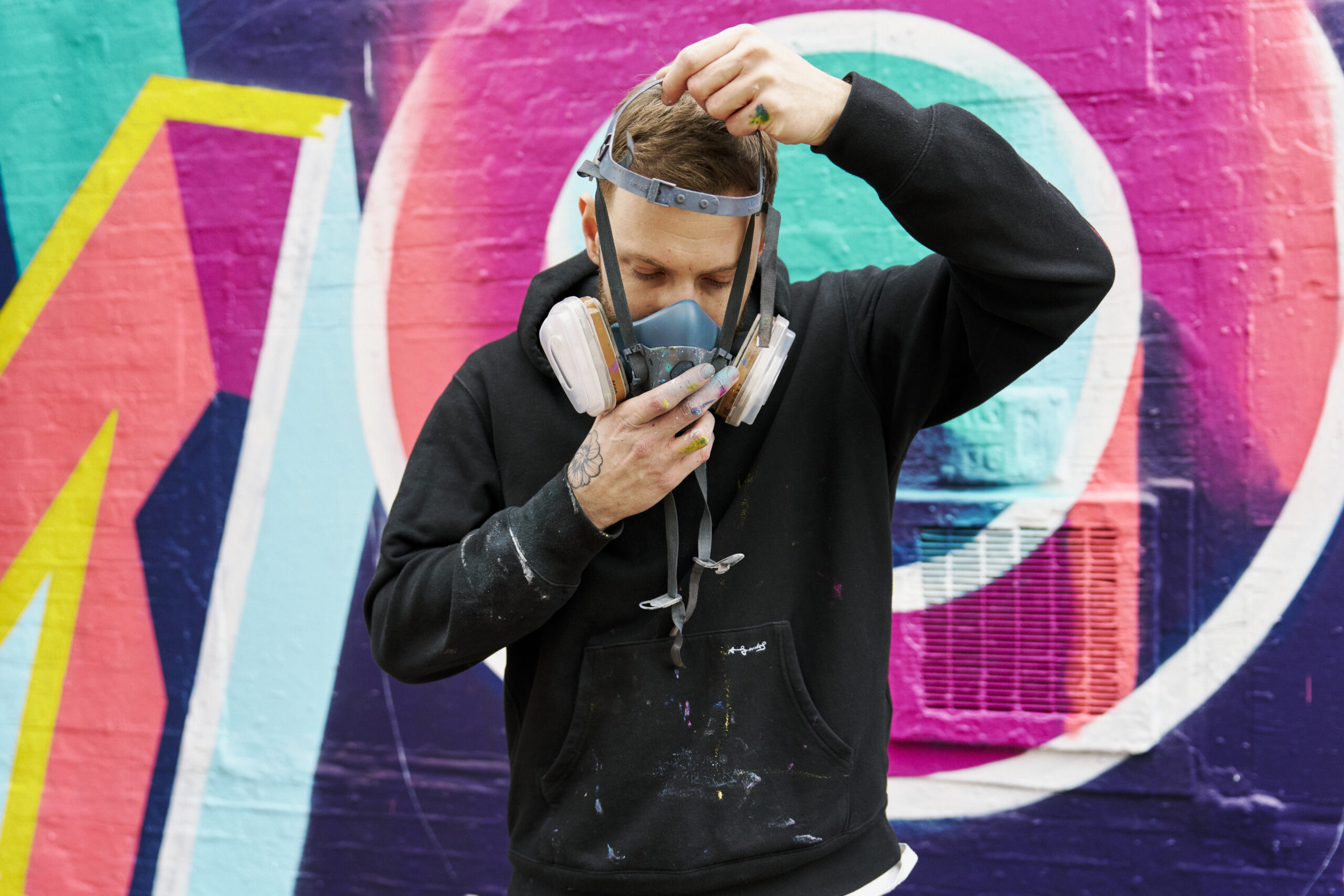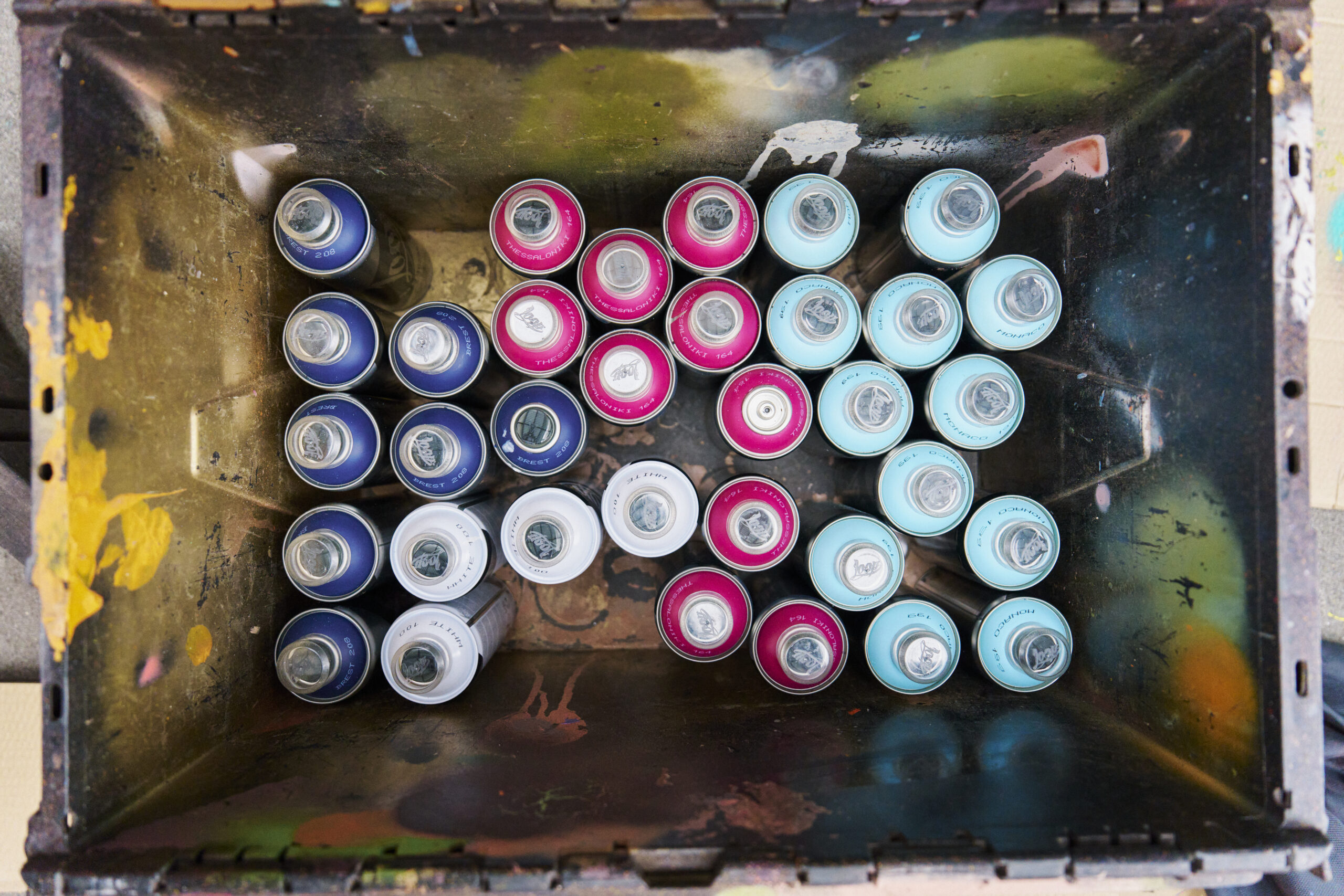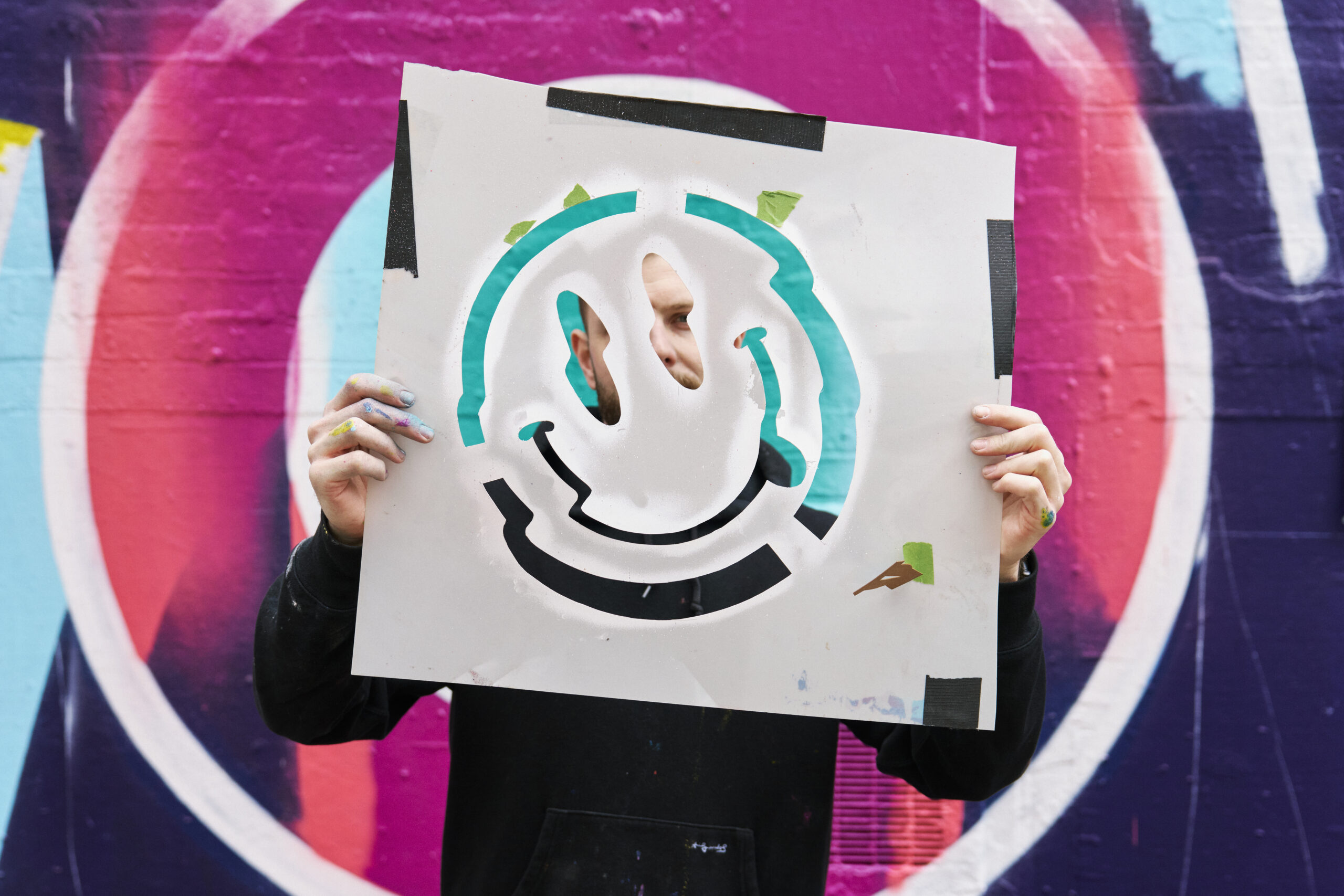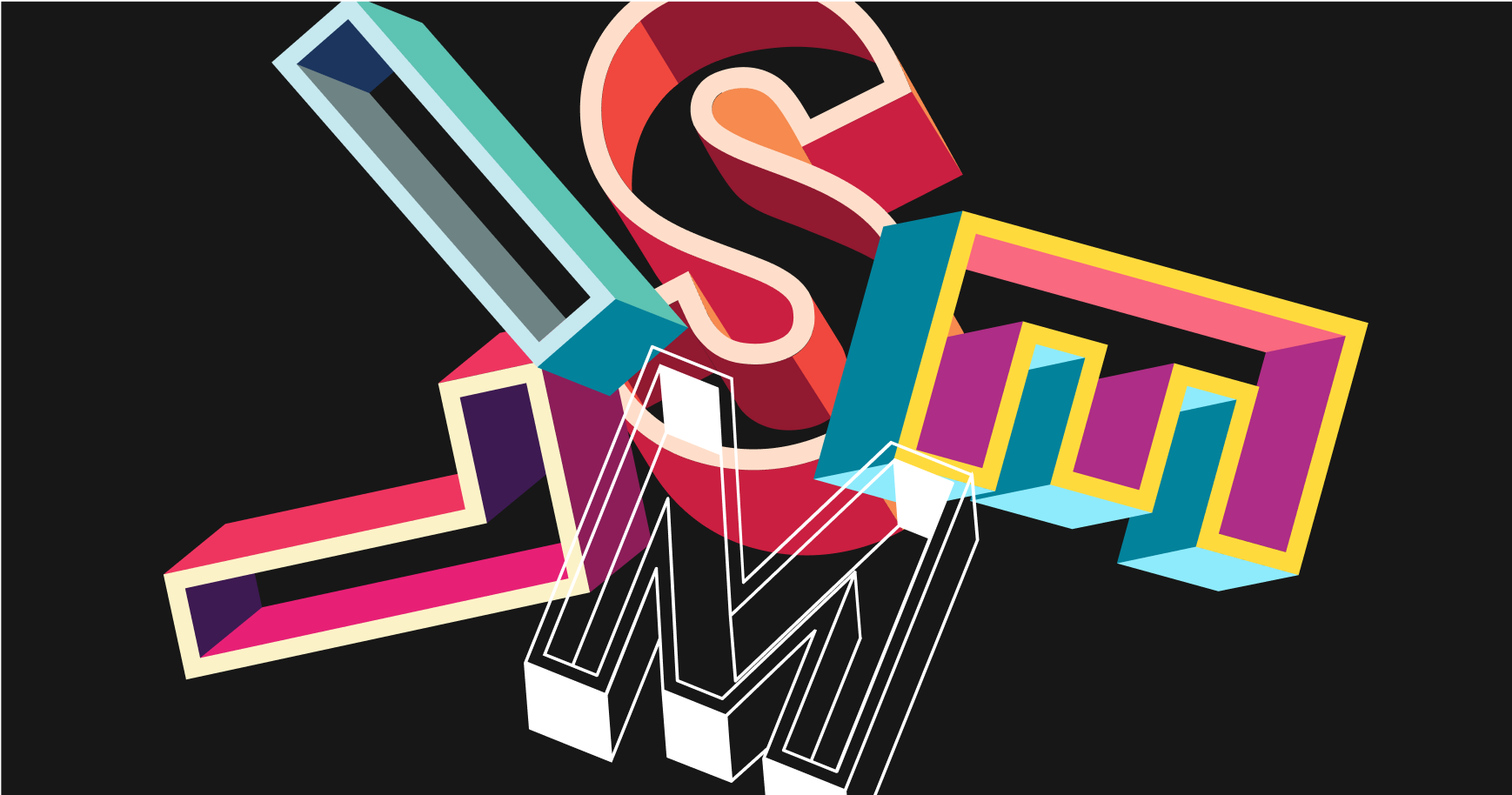Highlights
Table of Contents
Explore article topics
Make it Move
This spring, street artist Luke Smile will transform a wall in Shoreditch, London, into a street artwork. The UK-based artist has teamed up with Artlist to turn his work into a digitized typography template available exclusively in their catalog. Together, the collaboration will blur the lines between the physical and digital and offer Artlist users an unprecedented opportunity to integrate authentic street art into their video projects. The collaboration is called Make it Move.
Head to the Great Eastern Street Gallery from March 11th to March 16th to catch the artist in action. That’s where you’ll find Luke Smile armed with spray cans, transforming a wall from a blank canvas into a captivating typographic artwork. Luke’s work highlights the importance of street art as a vehicle for creativity and innovation, and a tool for social commentary and public engagement. By turning his work into downloadable templates, Artlist hopes to encourage video creators to use the highest-quality templates made by leading artists and push the boundaries of their imagination.

Becoming an artist
Luke Smile is no stranger to pushing the boundaries of innovation. Since he first put pen to paper, he hasn’t stopped drawing. While at school, he’d draw in his notepads, sketching out characters or landscapes and then moving onto big, bold lettering in a range of typographies.
As a teen, he’d head into London, watching in awe as local street artists transformed a boring old wall into a kaleidoscope of color and meaning. “Back then, it was so hard to paint murals in London,” Luke says. “People would always tell you not to do it.”
Nevertheless, he started graffitiing around his local neighborhood, drawn to big, bold lettering that took up space and caught the eye. Art felt more like a compulsion than anything, so he immersed himself in his art lessons in high school. He then studied graphic design at college, followed by a degree at Ravensbourne University in London.
When he graduated, he took on graphic design roles in agencies in London but couldn’t ignore the urge to get outside and create on larger canvases. He started painting murals on the streets of London using a font he’d created called Smile Sans, which soon caught the eye of Karl Lagerfeld’s design team. They asked Luke to use his skills to hand-paint names of European cities on their tote bags, which is when the penny dropped, and Luke realized he could do this as a full-time job. After he painted 650 of Karl’s tote bags, the commissions started rolling in from a range of clients across various industries, including Amazon, Barbour International, Beefeater Gin, Paypal, Vans, and Virgin.
But through it all, Luke never lost sight of his first love: street art. “The culture’s completely changed since 12 years ago,” he says. “Now, everywhere you look, there’s color, there’s paint everywhere.”

The creative process
Luke has spent years perfecting his technique and applies his tried-and-tested formula to every wall he paints.
“If I’m painting a mural, I’ll check out the shape and think about what word or phrase would fit best on to this size canvas,” he says. “Once I choose a phrase I can work with, I have the whole alphabet of Smile Sans 3D printed, so I can trace the compositions exactly as I want, whether they overlap or fit tight together.”
Luke will bring studio lights with him to form shadows on the wall, and then he’ll use his iPad to test out color palettes, using mock-ups to see what works. He’s ready to get to work once he has his stencils and color palette.

Even by Luke’s standards, this collaboration with Artlist is unique. “I haven’t really done anything like this,” he says. “I’m painting this mural three times to get different images and make it into an animation. I’m excited because I’ve always wanted to do more moving images, and I’ve never painted over something I’ve already painted, so it’s going to be really interesting to see how this pans out. I know it’s going to be great.”
Liran Friedman, Head of Brand Marketing at Artlist, added, “Artlist is dedicated to empowering brands and creators by providing them with the highest quality creative assets, made by real artists, to bring their visions to life. Partnering with Luke Smile is a natural extension of our mission, enabling us to bring the raw, unfiltered art of the streets into the digital realm, for our users to explore, create, and make it their own.”
Luke will also have the added buzz of seeing the entire Artlist community use his templates within their own creative work. His mural will be reused and recreated hundreds of times in various ways, which will be a totally new use of his art and inspiring for both the artist and the creators. “This collaboration with Artlist allows my art to exceed physical boundaries and reach a global audience. It’s about empowering all creators to experiment and express themselves in new ways”.
Blurring the lines
Street art used to be for outsiders. Back in the ‘80s and ‘90s, street artists created a counter-culture that deviated from what they’d find in art galleries around the world. Impressionism, expressionism, neoclassicism; that was for the indoor galleries. Outdoors, there was free rein. Here, the only constraint was time, and as long as the artists could get through their paintings without getting arrested, their mission was a success.
In terms of access, street art was a leveler. Anyone and everyone could see it, whether they wanted to or not, and it was free. Indoor art in fancy museums was reserved for those who could afford to go and see it. However, over the last two decades, that has completely changed. Now, thanks to the likes of Banksy, Cornbread, and Daze, street art is considered fine art. Some works sell for tens of millions of dollars, so opportunities for street artists have blown wide open. It’s much more acceptable to collaborate with the institutions that initially rejected the form and to work with big brands, advertisers, and artists. The possibilities for street artists have totally opened up, and Luke’s work is now seen as pop culture rather than counterculture.
“A lot more graffiti artists are moving down the fine art route, and it’s all becoming much more accepted across the board,” Luke says. “Everywhere you look now, artists, brands, and advertisers are using this urban style of art. It’s more accepted and thought of as cool, but until recently, people looked down their noses at it. Now they’re more open-minded about this style of art.”
Make it your own
If you’re in London this March, head over to Shoreditch to check out Luke Smile in action. To use his creation as a digitized template, you can sign up to Artlist. You’ll also get access to thousands more high-quality, customizable templates that are versatile, easy to use, and suitable for many creative projects, including video production, graphic design, and digital art.
Alice Austin is a freelance writer from London. She writes for Mixmag, Beatportal, Huck, Dummy, Electronic Beats, Red Bulletin and more. She likes to explore youth and sub-culture through the lens of music, a vocation that has led her around the world. You can contact and/or follow her on Twitter and Instagram.
Share this article
Did you find this article useful?
Related Posts
- By Jonathan Mateer
- 8 MIN READ
- By Jonathan Mateer
- 9 MIN READ
Latest Posts
- 25 Apr
- By Josh Edwards
- 4 MIN READ
